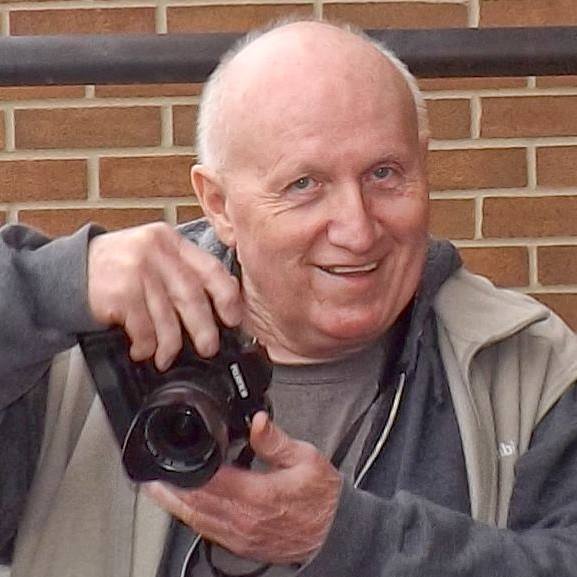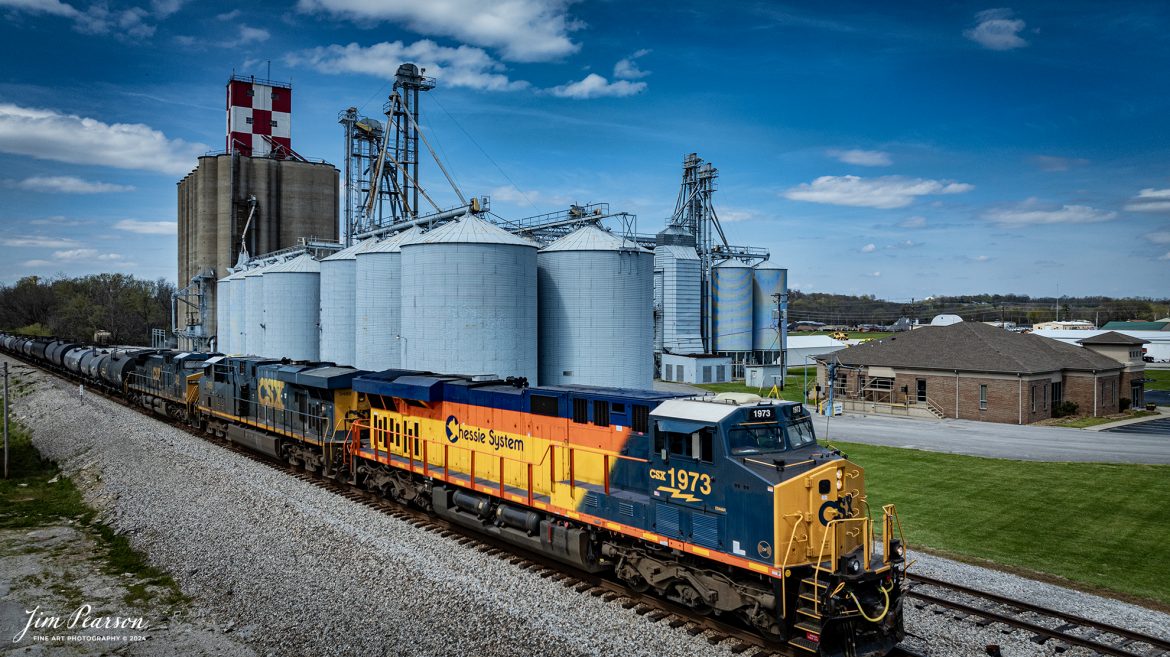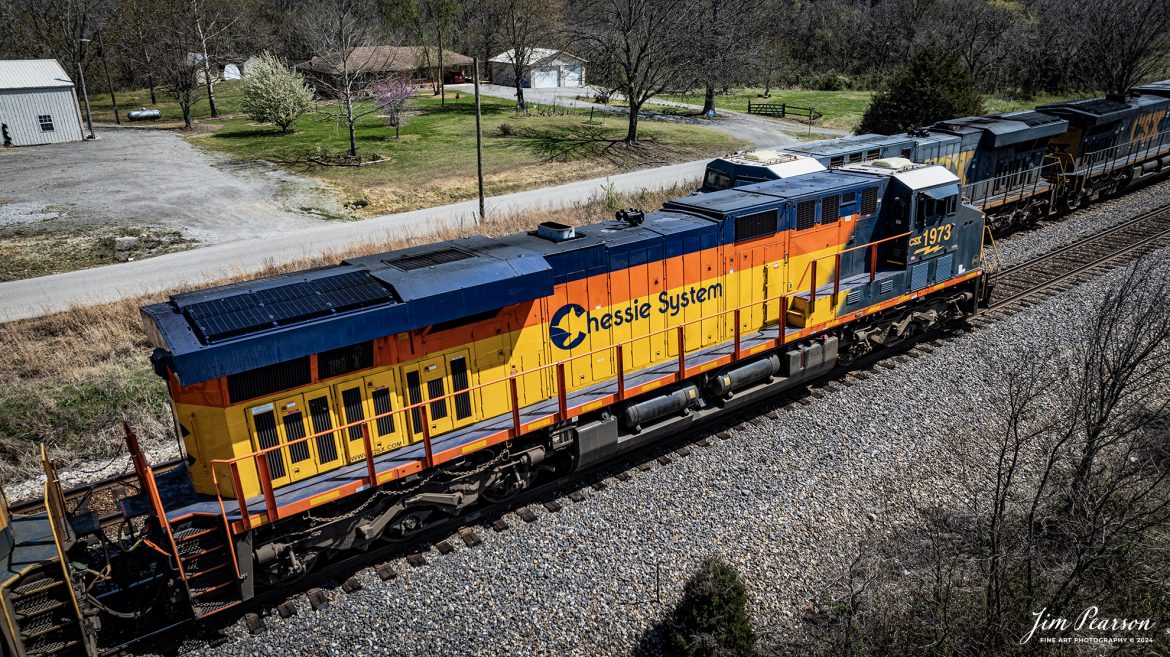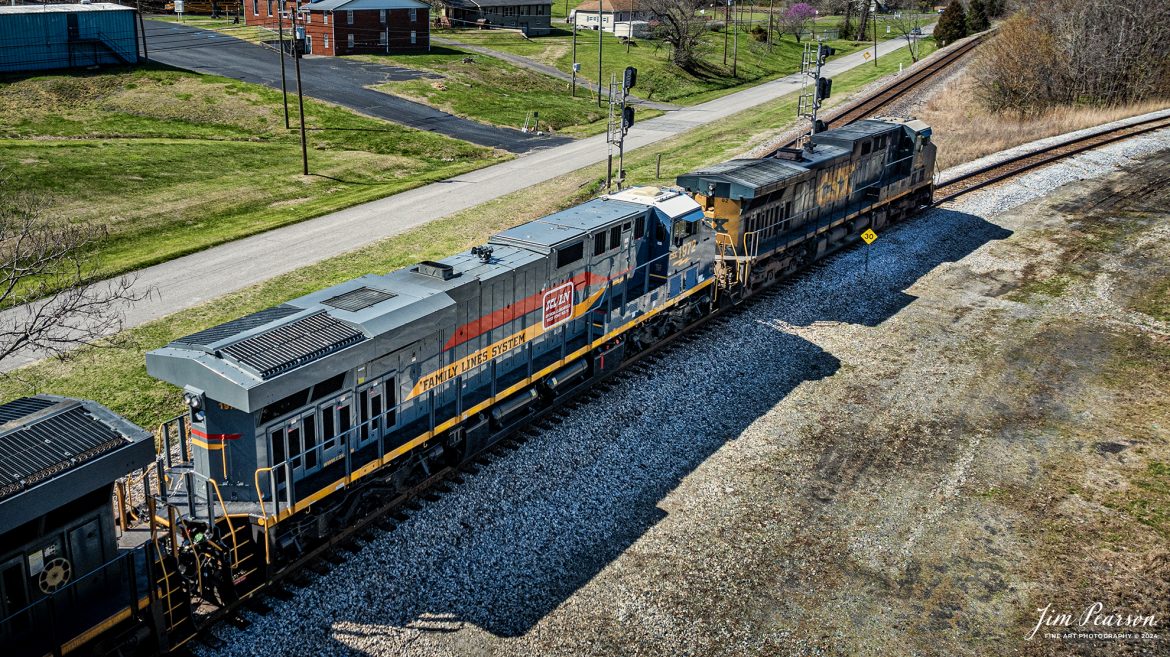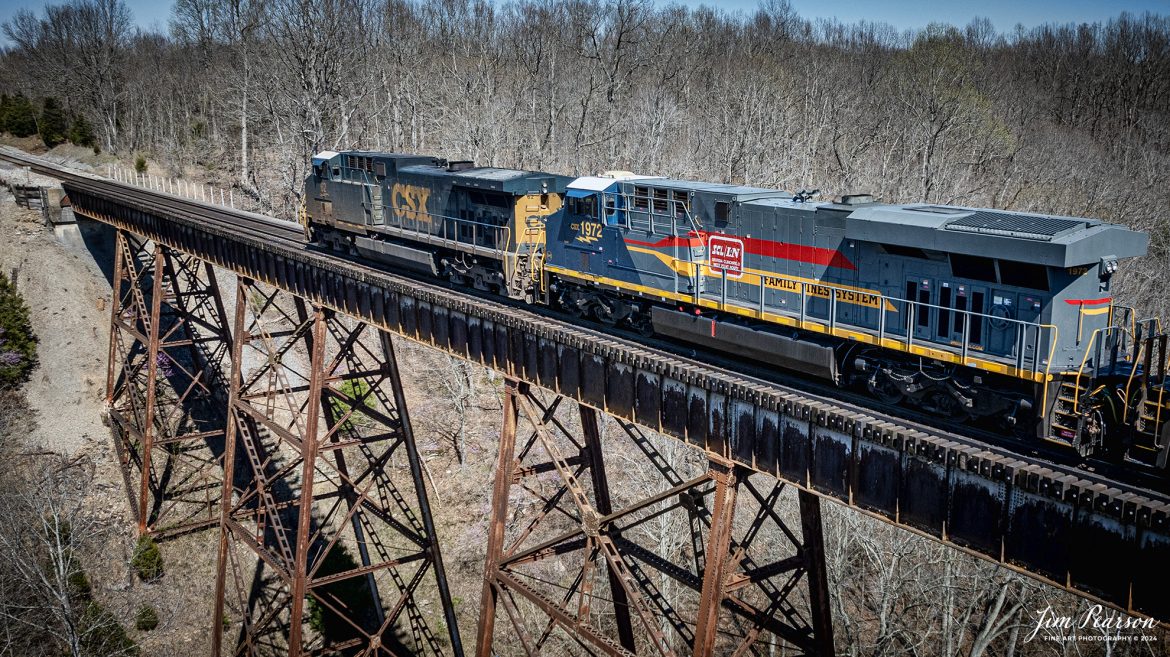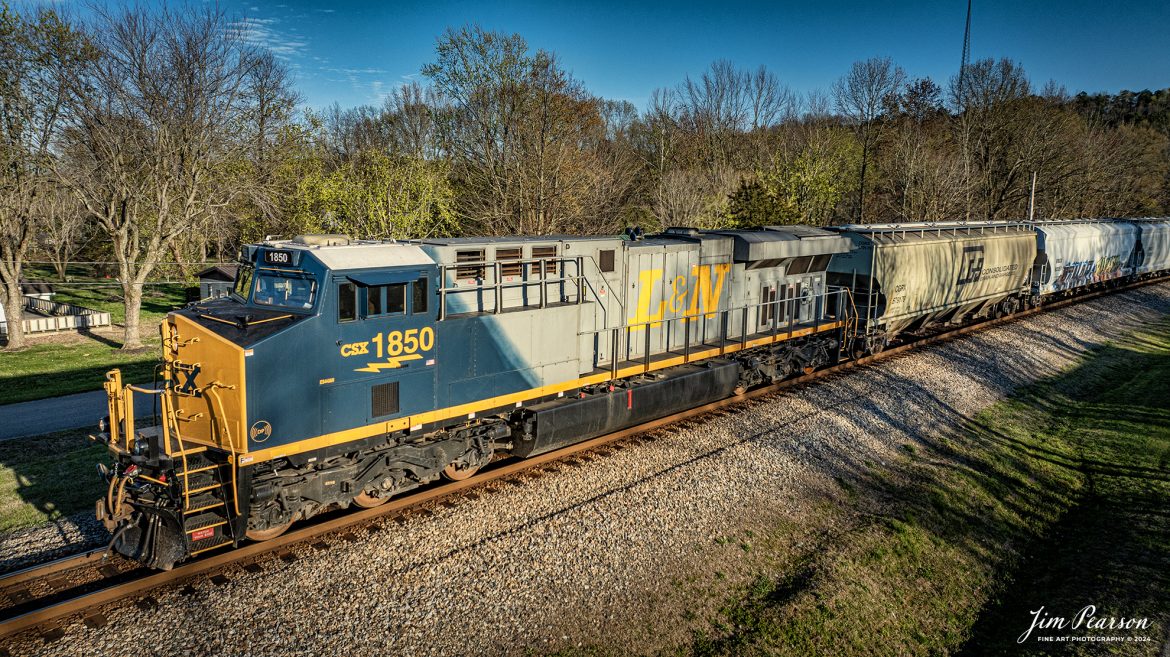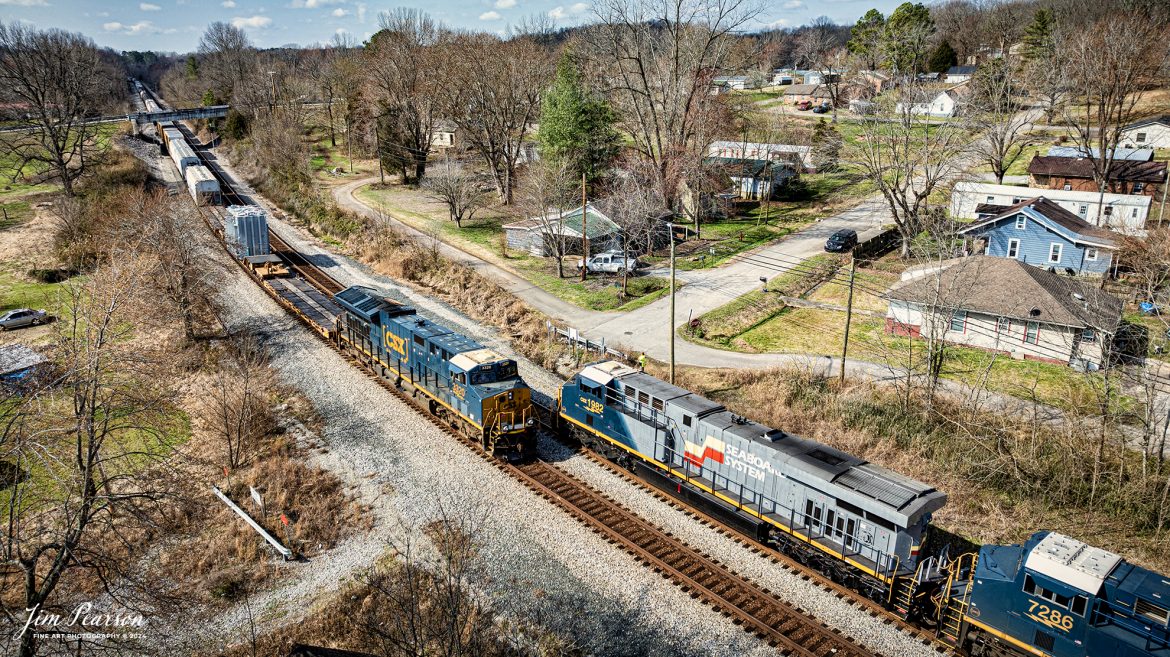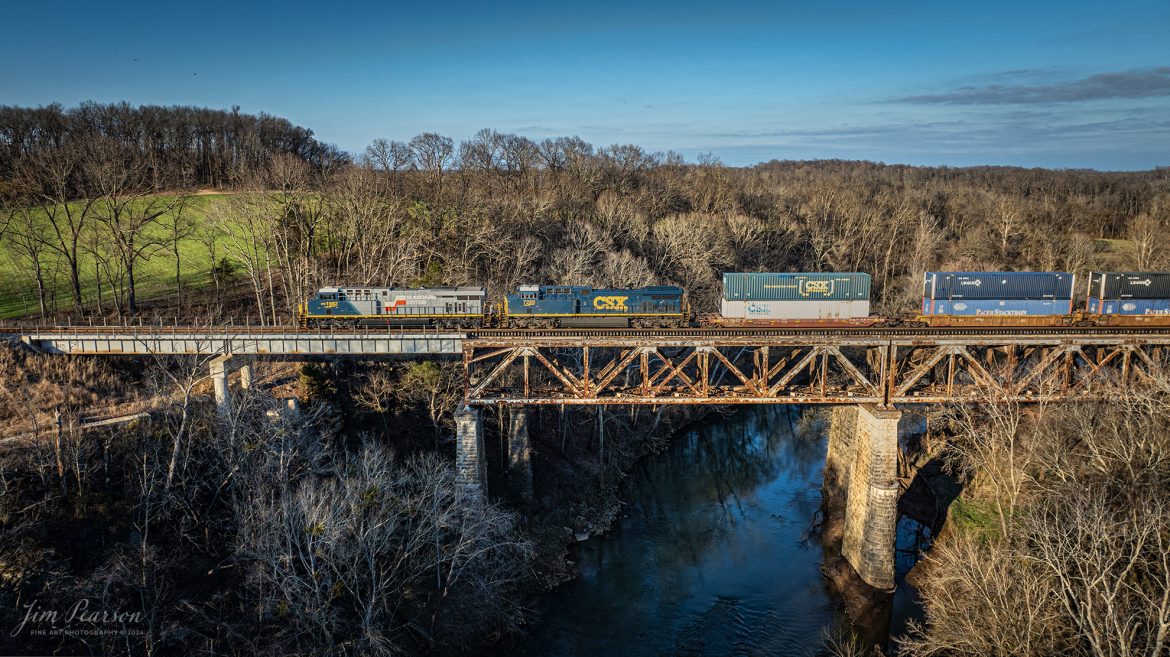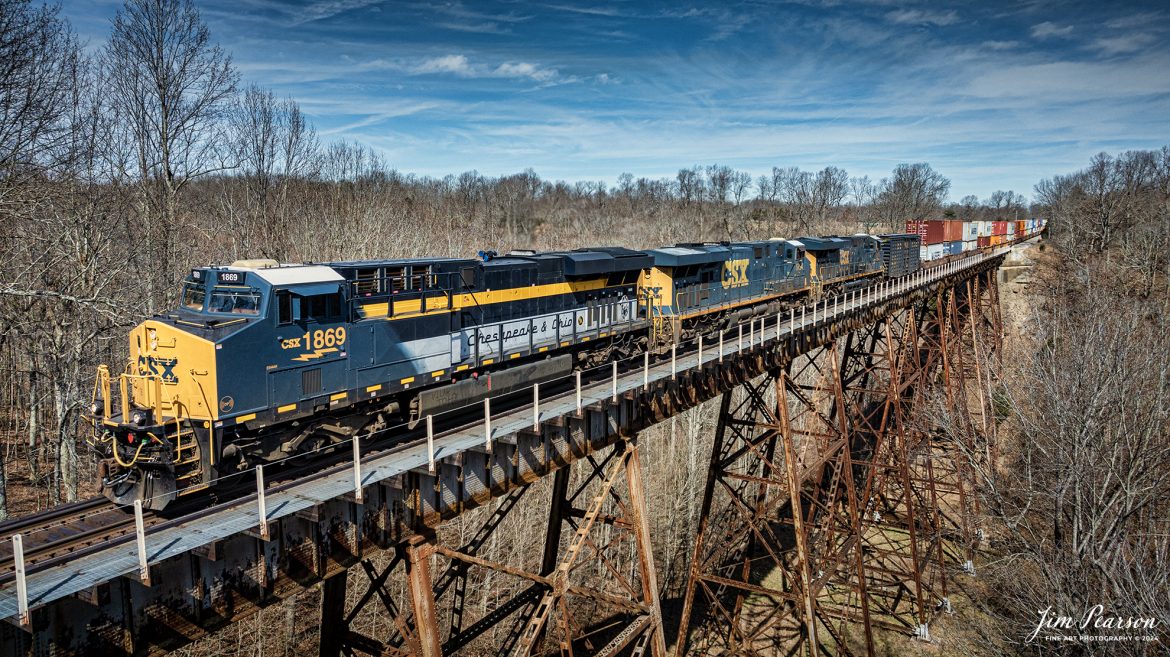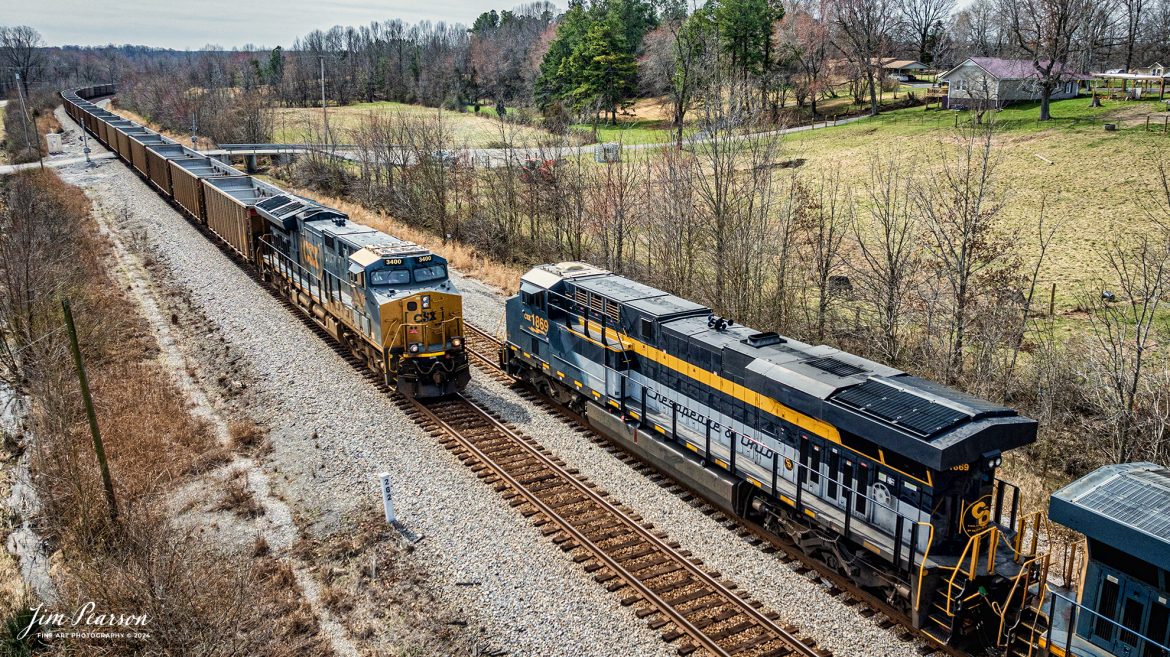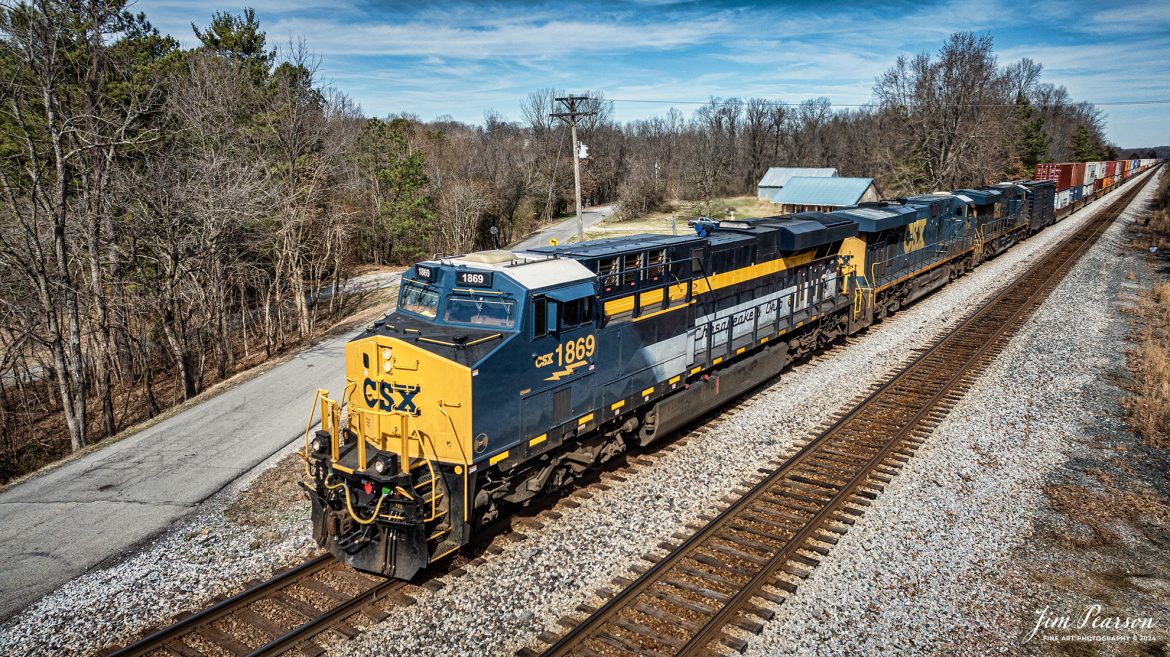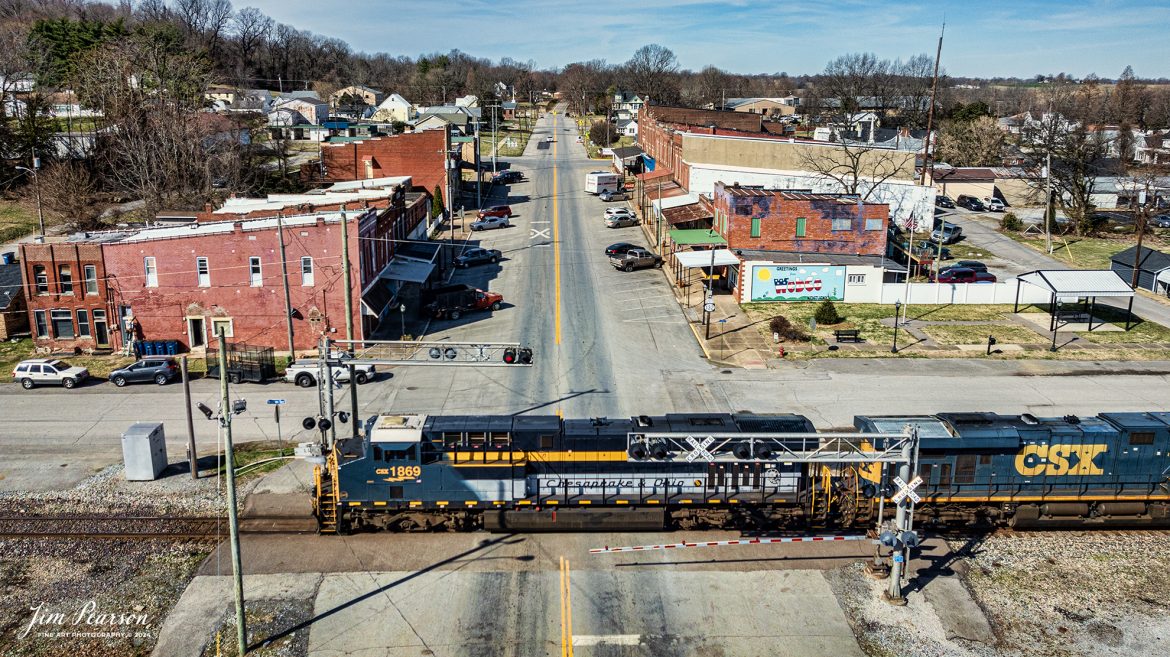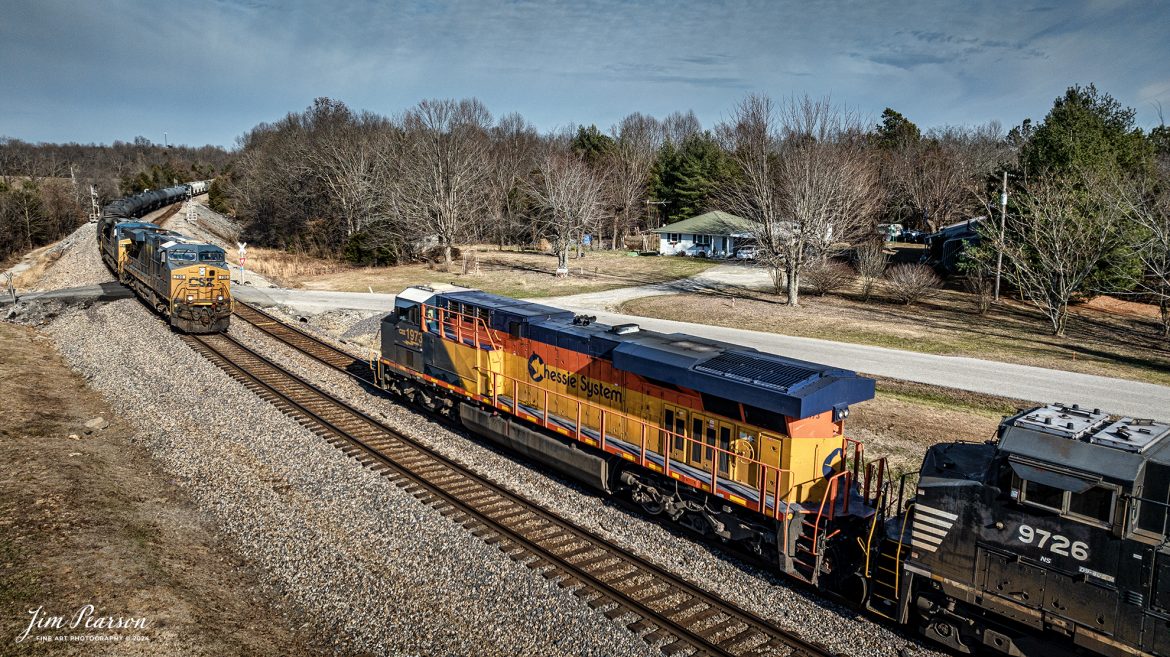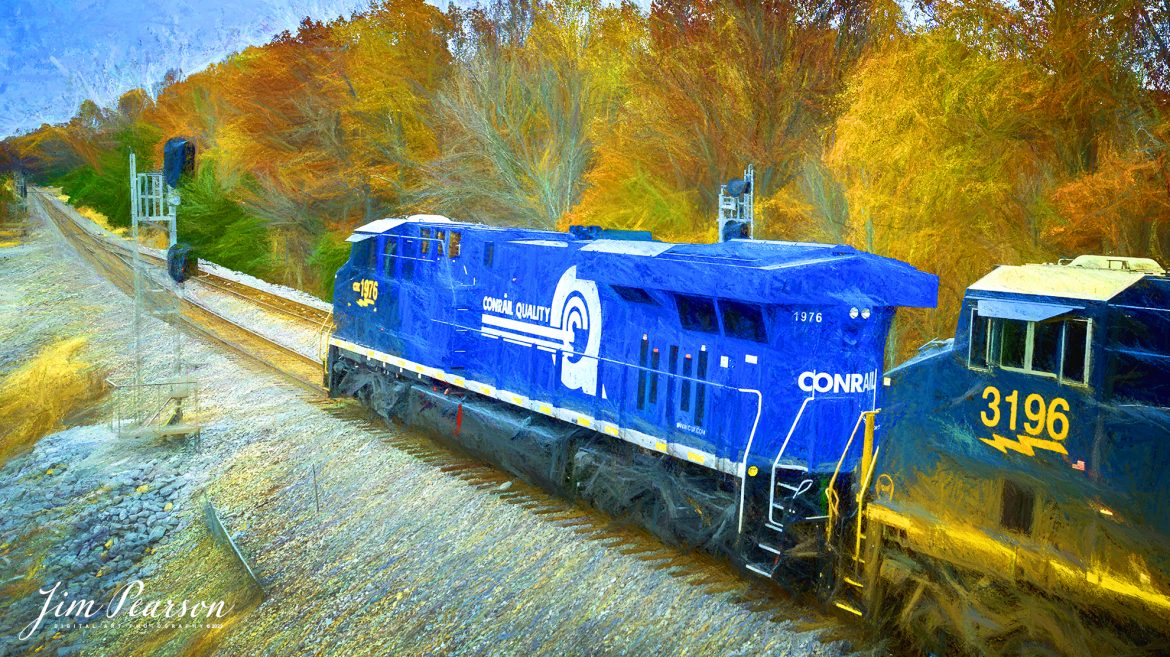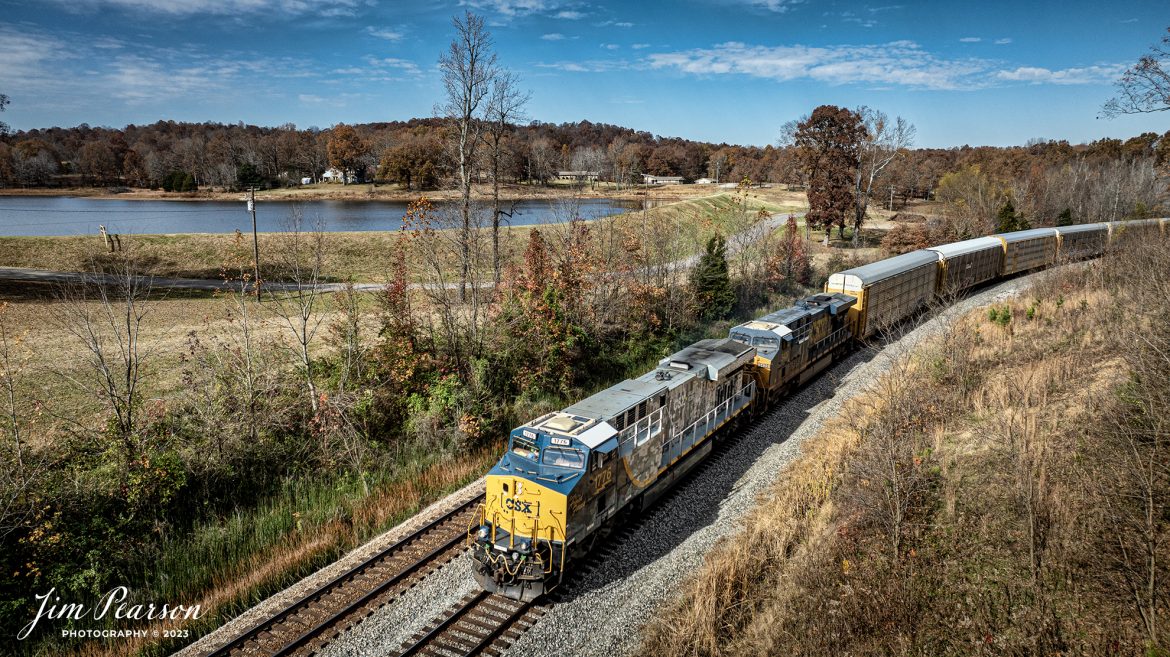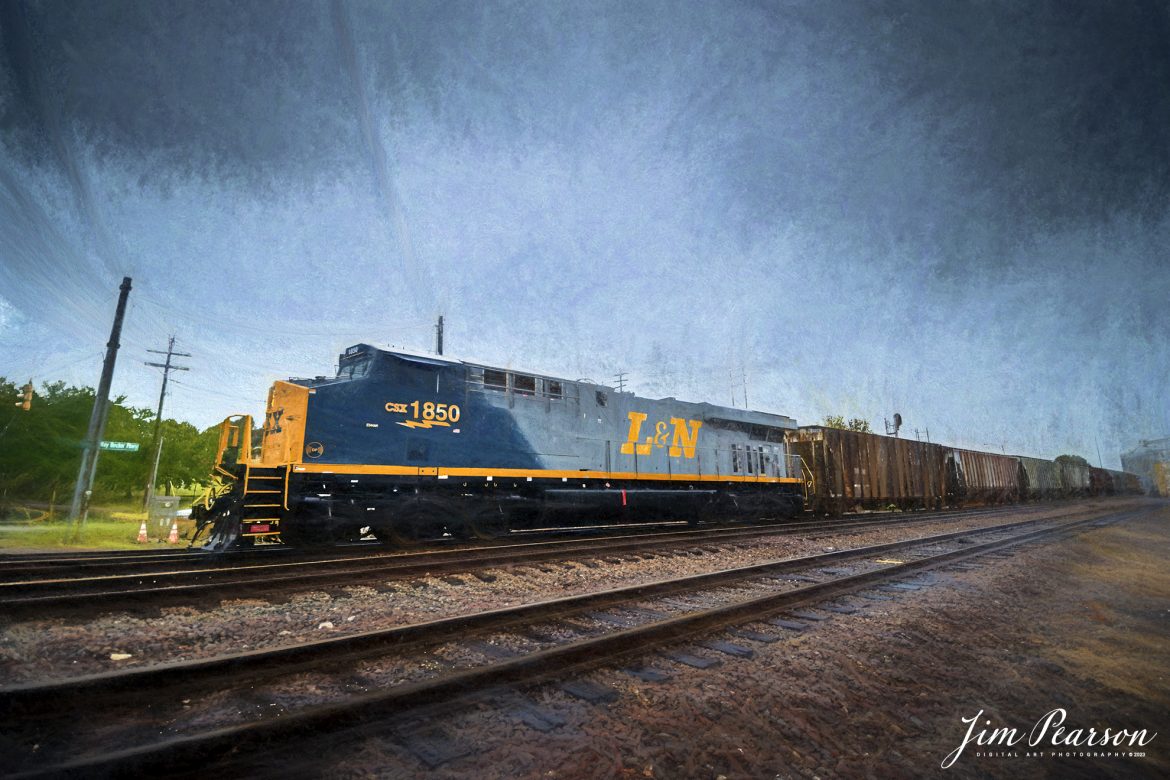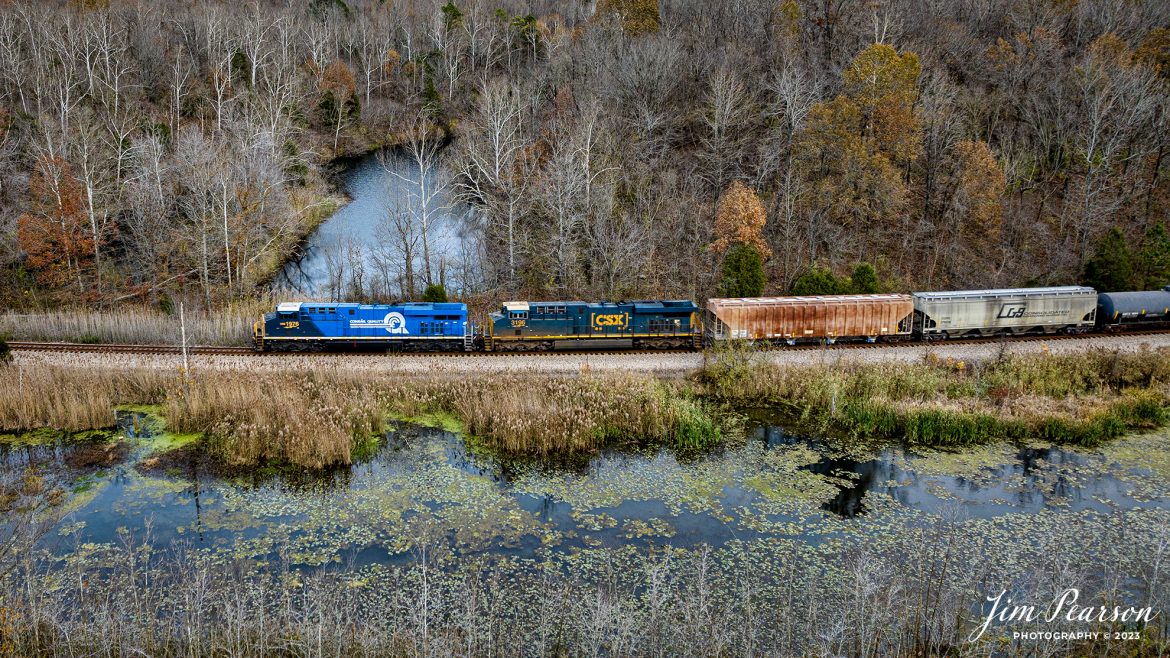CSXT 1973, Chessie System Heritage Unit, leads CSX M647 as it the Hopkinsville Elevator Company complex at Skyline Drive in Hopkinsville, Ky, as it continues south on the CSX Henderson Subdivision, on March 30th, 2024. The Henderson Subdivision has seen a lot of CSX Heritage units the last week or so and hopefully there’ll be more in the future so I can capture and share them with you! I’ll be posting some videos of these moves in future Saturday Edited Videos so keep an eye out for them!
According to Wikipedia: The three railroads that would make up the Chessie System had been closely related since the 1960s. C&O had acquired controlling interest in B&O in 1962, and the two had jointly controlled WM since 1967.
Chessie System, Inc. was a holding company that owned the Chesapeake and Ohio Railway (C&O), the Baltimore and Ohio Railroad (B&O), the Western Maryland Railway (WM), and Baltimore and Ohio Chicago Terminal Railroad (B&OCT). Trains operated under the Chessie name from 1973 to 1987.
On November 1, 1980, Chessie System merged with Seaboard Coastline Industries to form CSX Corporation. Initially, the three Chessie System railroads continued to operate separately, even after Seaboard’s six Family Lines System railroads were merged into the Seaboard System Railroad on December 29, 1982. That began to change in 1983, when the WM was merged into the B&O. The Chessie image continued to be applied to new and re-painted equipment until July 1, 1986, when CSXT introduced its own paint scheme. In April 1987, the B&O was merged into the C&O. In August 1987, C&O merged into CSX Transportation, a 1986 renaming of the Seaboard System Railroad, and the Chessie System name was retired.
Tech Info: DJI Mavic 3 Classic Drone, RAW, 22mm, f/2.8, 1/1600, ISO 100.
